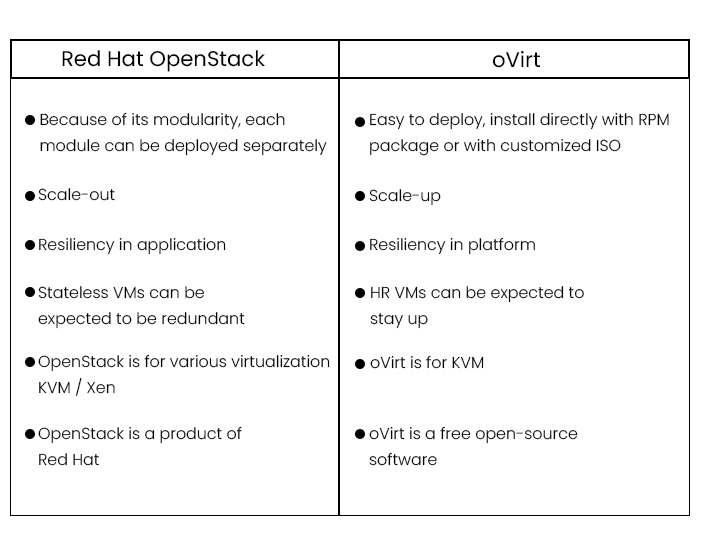What is Red Hat OpenStack?
OpenStack is a suite of software tools for creating and managing public and private cloud computing platforms. OpenStack allows users to quickly deploy virtual machines and other instances that handle various duties for administering a cloud environment. One of OpenStack's strengths is that it facilitates horizontal scaling, which means that jobs that benefit from concurrent execution may easily serve more or fewer users on the fly by simply spinning up more instances.
The OpenStack initiative's main goals are to encourage cloud service interoperability and to enable businesses to construct Amazon-like cloud services in their own data centers.
What is oVirt?
oVirt is an open-source distributed virtualization system that can be used to manage your whole IT infrastructure. With oVirt, it's simple to set up a cluster of physical devices on which to run Virtual Machines. oVirt can also support the same guest operating systems as QEMU/KVM can.
oVirt also allows you to use various storage backends at the same time, such as GlusterFS, NFS, iSCSI, FC, or even local storage (you may want to use this last one in very few cases). OVN is in charge of networking virtualization.
Comparison between Red Hat OpenStack vs oVirt

Verdict
Both OpenStack and oVirt have a lot of commonalities. Both require a dashboard, the definition of VLANs, and shared storage for the VMs in both scenarios. Small and medium businesses can use OpenStack, but it takes a team of competent engineers, thus it is significantly better software for enterprises. Both products are still evolving. Both OpenStack and oVirt are excellent programs. Both software, on the other hand, does not compete with one another but rather complements one another very well. To know how OpenStack competes with CloudStack visit here.
Contact us to learn what RedHat OpenStack or oVirt services might look like for your organization. Allow our representative to either call you in 24 hours or e-mail you for more details about our services - Click Here





